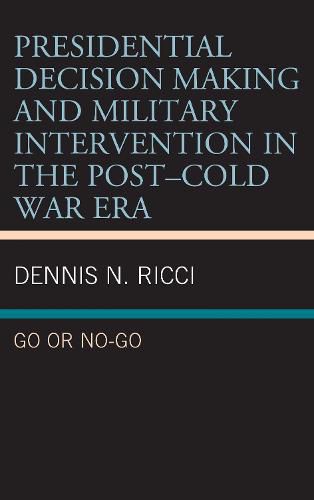Readings Newsletter
Become a Readings Member to make your shopping experience even easier.
Sign in or sign up for free!
You’re not far away from qualifying for FREE standard shipping within Australia
You’ve qualified for FREE standard shipping within Australia
The cart is loading…






Despite the end of the Cold War, the frequency of U.S. military intervention has increased. While military intervention accelerated after 9/11, increasing intervention was demonstrably evident well before 2001. Presidential Decision Making and Military Intervention in the Post-Cold War Era: Go or No-Go analyzes presidential decision making regarding military intervention through a focused, structured comparison of go and no-go decisions from the four successive administrations of Presidents George H. W. Bush, Bill Clinton, George W. Bush, and Barack Obama. Dennis Ricci explores competing explanations for why a presidential administration will decide to intervene in one situation and not in another. Since both the situations and decision makers vary across cases, Ricci analyzes explanations for intervention by asking: Why intervene? Why use force or not? Under what conditions or circumstances are intervention decisions made?
$9.00 standard shipping within Australia
FREE standard shipping within Australia for orders over $100.00
Express & International shipping calculated at checkout
Despite the end of the Cold War, the frequency of U.S. military intervention has increased. While military intervention accelerated after 9/11, increasing intervention was demonstrably evident well before 2001. Presidential Decision Making and Military Intervention in the Post-Cold War Era: Go or No-Go analyzes presidential decision making regarding military intervention through a focused, structured comparison of go and no-go decisions from the four successive administrations of Presidents George H. W. Bush, Bill Clinton, George W. Bush, and Barack Obama. Dennis Ricci explores competing explanations for why a presidential administration will decide to intervene in one situation and not in another. Since both the situations and decision makers vary across cases, Ricci analyzes explanations for intervention by asking: Why intervene? Why use force or not? Under what conditions or circumstances are intervention decisions made?